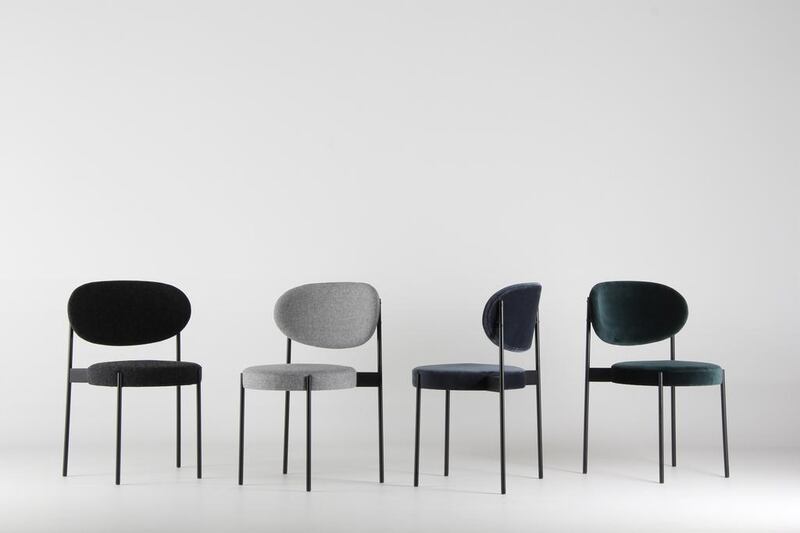Verner Panton is one of the design world's undisputed greats. The unconventional creative was at the forefront of the post-war Danish design movement, and responsible for such classics as the Panton Chair, System 1-2-3 chairs, and the Shell and Spiral lamps.
He was known for pushing boundaries, and in many ways, was a decidedly un-Danish Danish designer. He was enamoured by colour, captivated by the possibilities presented by plastic, and quick to experiment with new materials and forms.
He was perhaps best-known for wanting to create chairs that rejected the standard four-leg formula and looked like they were growing out of the ground – hence the Panton and System 1-2-3 lounge chairs. The S-shaped System 1-2-3, which was launched in 1973, was designed in cantilevered form, and appears to extend organically from the floor. It’s constructed from a steel tube frame and aluminium base, and finished with Miralastic fabric or leather.
The iconic Panton Chair, meanwhile, was first presented in 1967, with the original version constructed out of a rigid polyurethane foam with a glossy lacquer finish. The chair is now hailed as a design classic, with one of the earliest models to be found in the collection of the Museum of Modern Art in New York. Again, one of the chair’s key characteristics is its lack of legs – it’s supported instead by a sweeping, sculptural base.
Now, to mark the 90th anniversary of Panton’s birth, a relatively unknown chair by the famed designer has been unveiled – and this one does have legs.
Verpan is the company charged with protecting and reproducing Panton’s works. By the end of last century, most of the designer’s pieces were out of production, but one enthusiastic collector got in touch with the Panton Estate, asking for permission to reproduce some of the classics. Panton’s widow, Marianne, the executor of the estate, agreed, and the collector partnered with the Frandsen Group. Verpan, which is represented in the UAE by Four Frontiers, was born.
The Frandsen Group has since gained full control of the company and this year, to mark the 90th anniversary of Panton’s birth, is reintroducing the Series 430.
Panton’s first seat with four legs, the Series 430 is an upholstered dining chair from 1967. Panton set out to create a dining chair that was as comfortable as an armchair, which is why the Series 430 has a wide, enveloping back and padded seat with elastic webbing, which allows it to adjust to the user’s weight.
Despite Panton’s fame, this is one piece that remains largely unknown. “We have looked at the chairs for some years, but we felt the year when Verner Panton would have turned 90 was a great year to bring back one of his hidden treasures,” says Peter Frandsen, Verpan’s chief executive.
Unveiled during the Stockholm Furniture & Light Fair on February 9, and due to be rolled out in key markets globally in coming months, today’s Series 430 remains true to Panton’s original design, and includes a powder-coated steel frame that ensures it’s light enough to be easily moved around. “The comfort of this chair is very unique, because of the construction and the use of elastic bands in the seat,” explains Frandsen. “This gives the chair a unique comfort, and makes it wonderful to sit in for many hours.”
For the 2.0 version, Verpan, which continues to work closely with Marianne Panton, opted to upholster the 82-centimetre-tall chair in two distinct fabrics, wool and velvet, in blue, green and grey. The shades aren’t those that you would immediately associate with Panton, but were selected to highlight how versatile and relevant this design remains to this day. Upholstery was sourced from Kvadrat, and includes midnight-blue and bottle-green options by Raf Simons and a grey wool by Nanna Ditzel.
“This design shows that Verner Panton was not stuck to one material or one design direction,” Frandsen says. “Verner designed products he loved, and was never bound to a certain material or styles. He created designs that combine functionality and form and aesthetics, all in one. This could be from simple forms like this chair, to more organic forms like on the Cloverleaf sofa.”
For more information, contact Four Frontiers, JLT, Dubai; www.fourfrontiers.com
sdenman@thenational.ae






